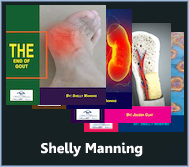Several factors can increase an individual’s likelihood of developing fatty liver disease, also known as non-alcoholic fatty liver disease (NAFLD). While NAFLD can affect people of all ages and backgrounds, certain risk factors may predispose individuals to the condition. Here are some factors that may increase the likelihood of developing fatty liver disease:
- Obesity: Obesity is strongly associated with the development of fatty liver disease. Excess body weight, particularly abdominal obesity (central adiposity), increases the risk of fat accumulation in the liver.
- Insulin Resistance and Type 2 Diabetes: Insulin resistance, a condition in which the body’s cells become less responsive to insulin, is closely linked to the development of fatty liver disease. People with insulin resistance or type 2 diabetes are at increased risk of NAFLD.
- Metabolic Syndrome: Metabolic syndrome is a cluster of conditions, including obesity, high blood pressure, high blood sugar, and abnormal lipid levels, that increase the risk of cardiovascular disease and type 2 diabetes. Metabolic syndrome is strongly associated with the development of fatty liver disease.
- High Blood Pressure (Hypertension): Hypertension is a risk factor for fatty liver disease. Elevated blood pressure can contribute to liver damage and inflammation, increasing the risk of NAFLD.
- High Cholesterol and Triglyceride Levels: Elevated levels of cholesterol and triglycerides in the blood are associated with an increased risk of fatty liver disease.
- Age: While fatty liver disease can occur at any age, the risk tends to increase with age. Older adults, particularly those with other risk factors, are more likely to develop NAFLD.
- Genetics: Some people may be genetically predisposed to developing fatty liver disease. Certain genetic factors can influence how the body metabolizes fat and regulates liver function, increasing the risk of fat accumulation in the liver.
- Ethnicity: Certain ethnic groups, such as Hispanic, South Asian, and Pacific Islander populations, have a higher prevalence of fatty liver disease compared to other ethnicities.
- Medications: Certain medications, such as corticosteroids, tamoxifen, methotrexate, and some antiretroviral drugs used to treat HIV, can increase the risk of fatty liver disease.
- Dietary Factors: Diets high in sugar, refined carbohydrates, and saturated fats can contribute to the development of fatty liver disease.
- Alcohol Consumption: While non-alcoholic fatty liver disease (NAFLD) is not caused by alcohol consumption, excessive alcohol consumption can contribute to liver damage and increase the risk of fatty liver disease.
It’s important to note that while these factors may increase the likelihood of developing fatty liver disease, not everyone with these risk factors will develop the condition. Additionally, fatty liver disease can occur in people who do not have any of these risk factors. If individuals are concerned about their risk of fatty liver disease or experience symptoms such as fatigue, abdominal pain, or yellowing of the skin and eyes (jaundice), they should consult a healthcare professional for evaluation and management. Early intervention and lifestyle modifications can help prevent progression to more severe liver damage and improve overall health outcomes.





